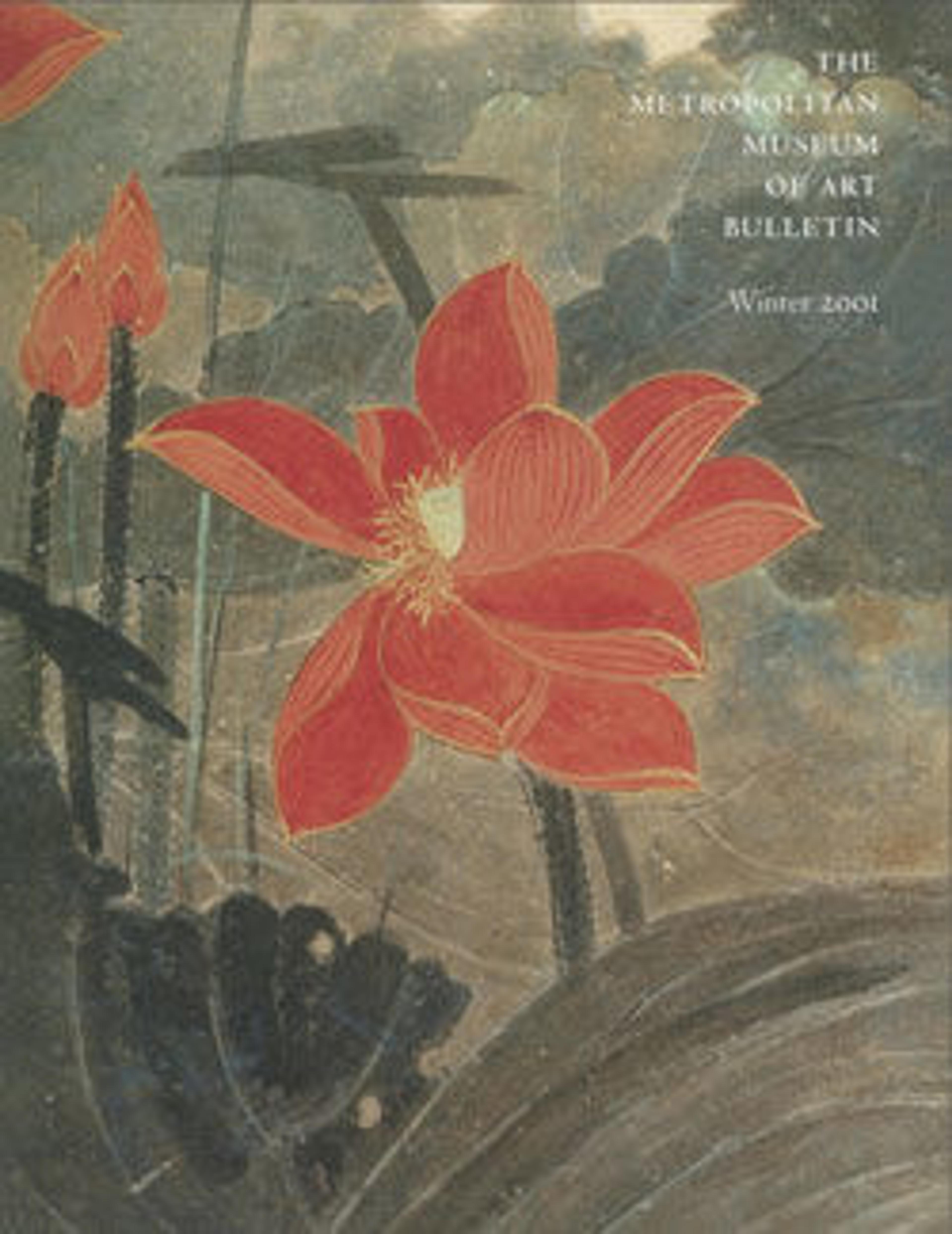Peach Blossoms and Peony
The preeminent literati artist of his day, Zhao Zhiqian applied his skills as a calligrapher and seal carver to the art of painting. His blending of contrasting compositional and graphic effects—positive forms and negative spaces, dry and wet ink, round and angular movements, heavy and light brushwork—derive from his calligraphic training; for this reason, Zhao's painting style, often referred to as "epigraphic," inaugurated a new direction for traditional Chinese artists.
The relationship of figure to ground, which is at the heart of seal carving, is seen here in Zhao's bold juxtaposition of the solidly colored peach blossoms and the monochrome peony, which are executed in the two traditional modes of flower painting: the "boneless" method of drawing in color without ink contours and the monochrome outline method. The pinwheel effect of Zhao's swirling cluster of blossoms is held in check by his compact inscription, which counterbalances the expansive leftward thrust of the peony. Zhao states that he is following the brush style of Wang Wu (1632–1690), but his mix of lush imagery and calligraphic techniques is quintessentially nineteenth century.
The relationship of figure to ground, which is at the heart of seal carving, is seen here in Zhao's bold juxtaposition of the solidly colored peach blossoms and the monochrome peony, which are executed in the two traditional modes of flower painting: the "boneless" method of drawing in color without ink contours and the monochrome outline method. The pinwheel effect of Zhao's swirling cluster of blossoms is held in check by his compact inscription, which counterbalances the expansive leftward thrust of the peony. Zhao states that he is following the brush style of Wang Wu (1632–1690), but his mix of lush imagery and calligraphic techniques is quintessentially nineteenth century.
Artwork Details
- 清 趙之謙 芍藥 桃花 扇面
- Title: Peach Blossoms and Peony
- Artist: Zhao Zhiqian (Chinese, 1829–1884)
- Period: Qing dynasty (1644–1911)
- Date: ca. 1860
- Culture: China
- Medium: Folding fan mounted as an album leaf; ink and color on gold-flecked paper
- Dimensions: 7 1/2 x 21 1/2 in. (19.1 x 54.6 cm)
- Classification: Paintings
- Credit Line: Gift of Robert Hatfield Ellsworth, in memory of La Ferne Hatfield Ellsworth, 1986
- Object Number: 1986.267.28
- Curatorial Department: Asian Art
More Artwork
Research Resources
The Met provides unparalleled resources for research and welcomes an international community of students and scholars. The Met's Open Access API is where creators and researchers can connect to the The Met collection. Open Access data and public domain images are available for unrestricted commercial and noncommercial use without permission or fee.
To request images under copyright and other restrictions, please use this Image Request form.
Feedback
We continue to research and examine historical and cultural context for objects in The Met collection. If you have comments or questions about this object record, please complete and submit this form. The Museum looks forward to receiving your comments.
